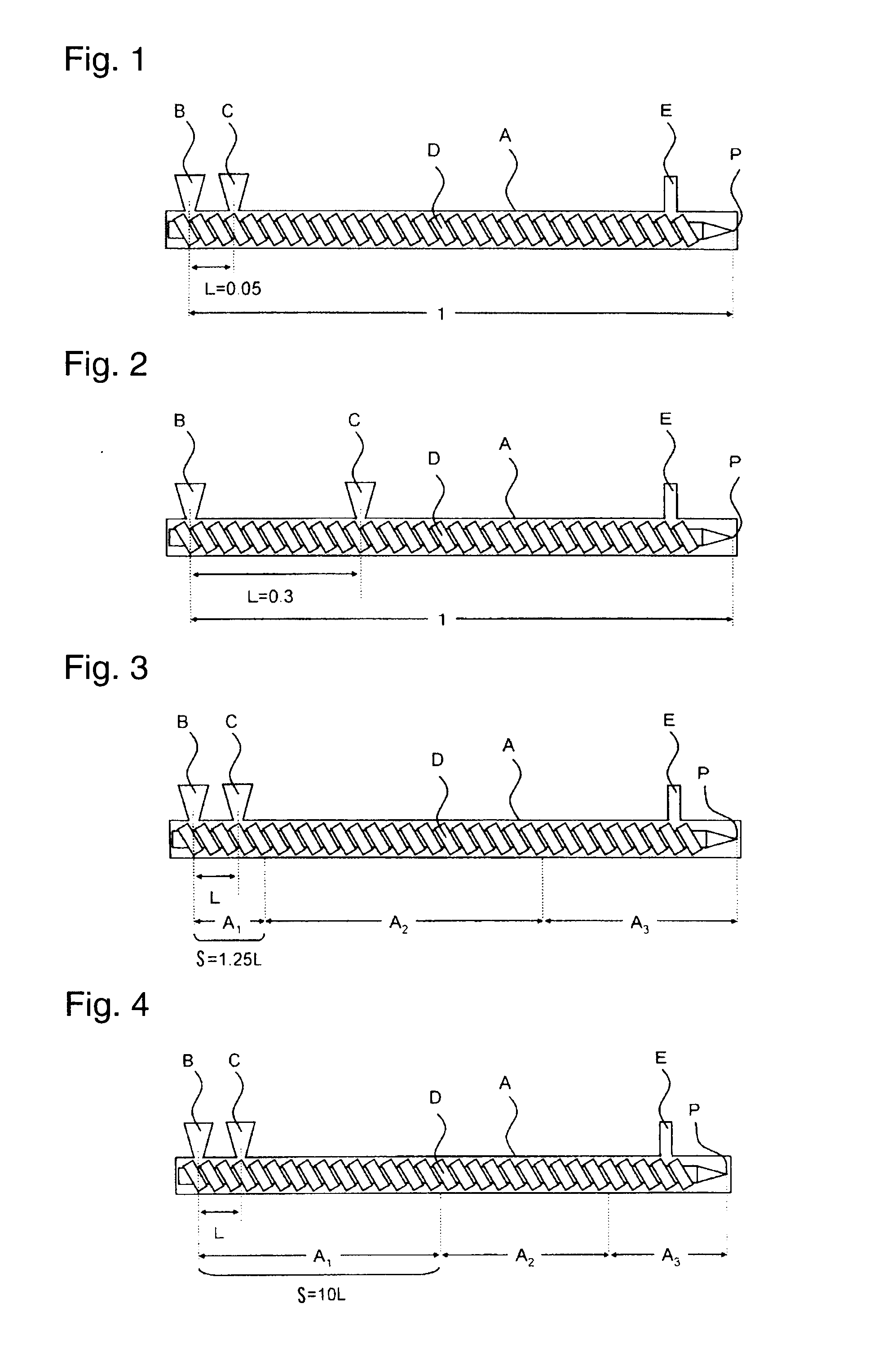Polyvinyl acetal sheet and process for production thereof
a technology of polyvinyl acetal and polyvinyl acetal, which is applied in the field of polyvinyl acetal sheet, can solve the problems of difficult to obtain the perfect decrease the transparency of the interlayer, and the translucency of the interlayer is difficult to achieve, and achieves excellent adhesion to glass, easy control of adhesion, and little color.
- Summary
- Abstract
- Description
- Claims
- Application Information
AI Technical Summary
Benefits of technology
Problems solved by technology
Method used
Image
Examples
example 1
Production of Polyvinyl Acetal Particles
[0142]900 g of pure water and 100 g of polyvinyl alcohol with an average polymerization degree of 1,700 and with a degree of saponification of 98 mol % were charged in a 3L dissolution tank equipped with an agitator, and the mixture was heated to obtain an aqueous solution of polyvinyl alcohol.
[0143]A cylindrical hermetically-closed reactor of glass with three supply inlets in a lower portion and one discharge outlet in an upper portion was prepared, the inside of the reactor was filled with pure water, and the internal temperature was maintained at 40° C. under agitation with anchor blades.
[0144]While continuing the agitation with the anchor blades at the internal temperature of 40° C., a 10-mass % polyvinyl alcohol aqueous solution, 35-mass % hydrochloric acid as an acid catalyst, and butyraldehyde were prepared and introduced into the reactor from the lower portion thereof so that the supply rates of the polyvinyl alcohol aqueous solution,...
example 2
[0155]Polyvinyl acetal particles were produced by carrying out the reaction in the same manner as in Example 1 except that a mixture of acetaldehyde and butyraldehyde (acetaldehyde / butyraldehyde=50 / 50 mass ratio), instead of butyraldehyde in Example 1, was supplied at a supply rate of 3.3 g / hr, and the polyvinyl acetal particles obtained were evaluated as in Example 1. The polyvinyl acetal particles had a particle size distribution with a peak top in the range of from 0.15 to 0.25 mm, a degree of acetalization of 83.2 mass % and a porosity of 82%.
example 3
[0156]Polyvinyl acetal particles were produced by carrying out the reaction in the same manner as in Example 2 except that the agitation power of the cylindrical hermetically-closed reactor of glass was changed to 0.5 kw / m3, and the polyvinyl acetal particles obtained were evaluated as in Example 2. The polyvinyl acetal particle had a particle size distribution with a peak top in the range of from 0.15 to 0.25 mm, a degree of acetalization of 83.1 mass % and a porosity of 70%.
PUM
| Property | Measurement | Unit |
|---|---|---|
| porosity | aaaaa | aaaaa |
| temperature | aaaaa | aaaaa |
| temperature | aaaaa | aaaaa |
Abstract
Description
Claims
Application Information
 Login to View More
Login to View More - R&D
- Intellectual Property
- Life Sciences
- Materials
- Tech Scout
- Unparalleled Data Quality
- Higher Quality Content
- 60% Fewer Hallucinations
Browse by: Latest US Patents, China's latest patents, Technical Efficacy Thesaurus, Application Domain, Technology Topic, Popular Technical Reports.
© 2025 PatSnap. All rights reserved.Legal|Privacy policy|Modern Slavery Act Transparency Statement|Sitemap|About US| Contact US: help@patsnap.com

